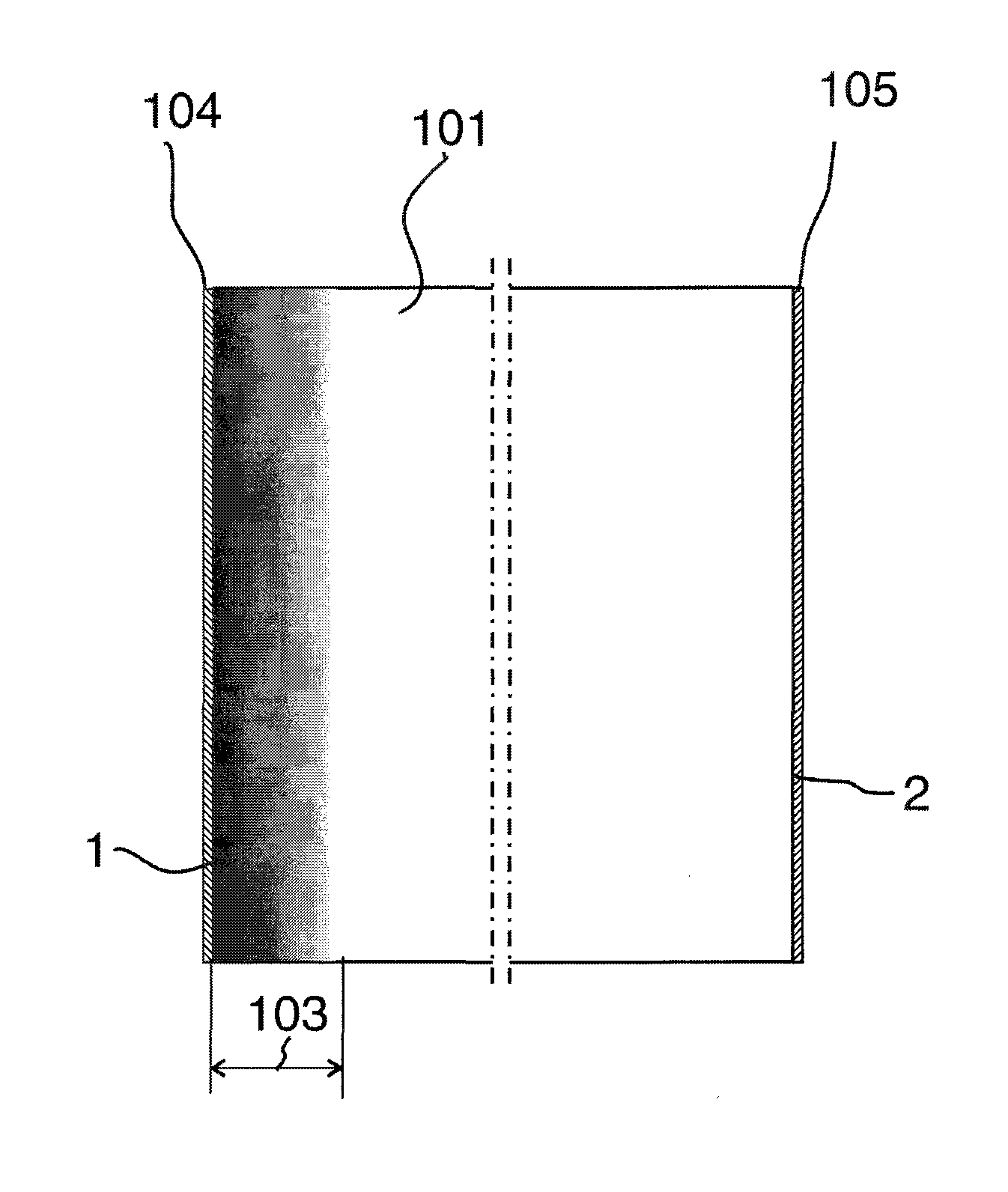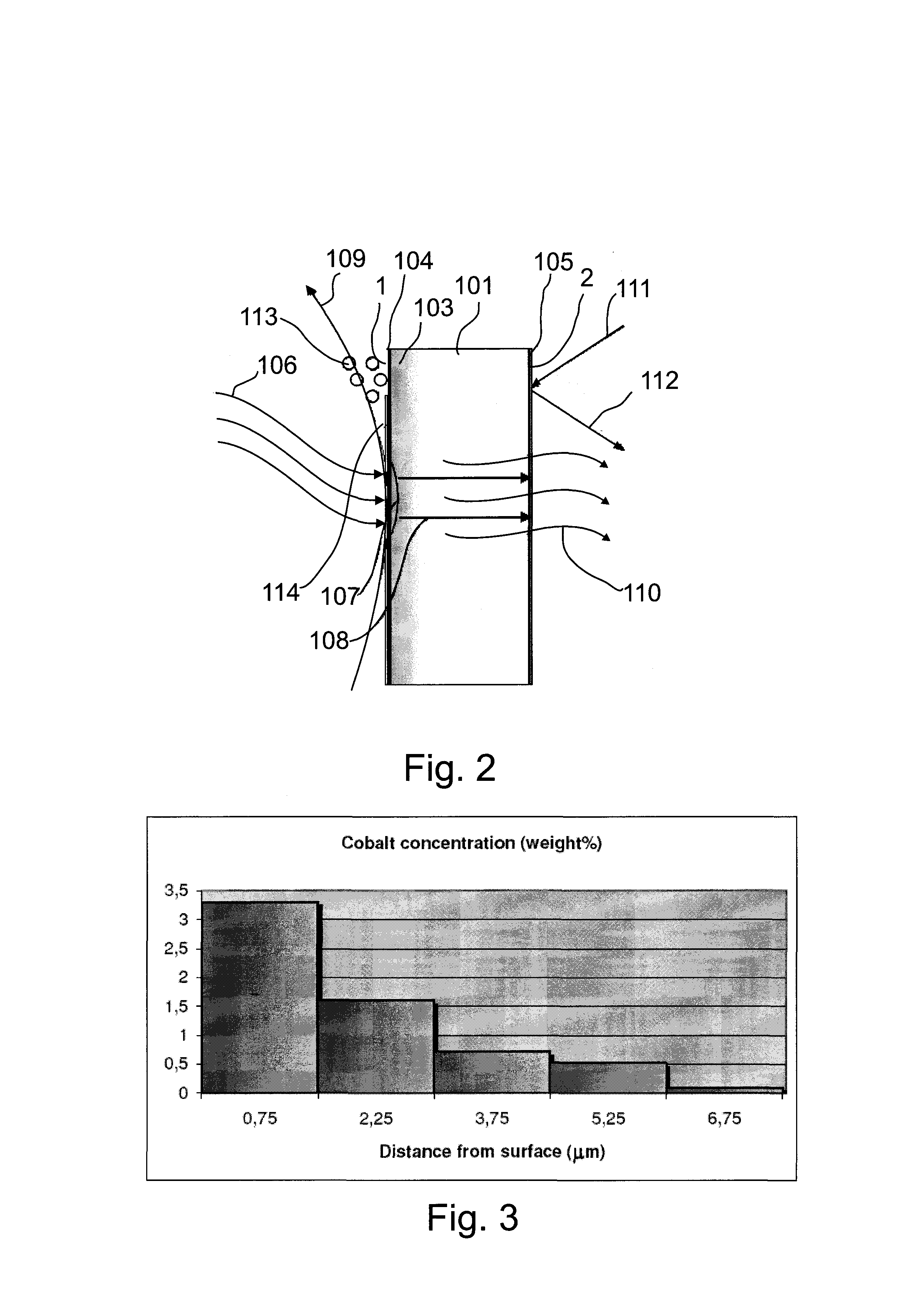Energy saving glass and a method for making energy saving glass
a technology of energy glass and energy saving glass, which is applied in the field of energy saving glass, can solve the problems of increasing the cost of flat glass production, and not being able to produce a sufficiently thick absorption layer at the flat glass production rate,
- Summary
- Abstract
- Description
- Claims
- Application Information
AI Technical Summary
Benefits of technology
Problems solved by technology
Method used
Image
Examples
examples
[0050]FIG. 1 shows the energy saving glass according to the invention. A layer of material 104 has been grown on the outer surface 1 of the glass by means of nanoparticles, from which layer the material diffuses and / or dissolves into the glass mass 101, providing an area 103 which is 0.1-100 micrometres deep and in which the metal oxide concentration of the glass gradually decreases when proceeding from the surface 1 deeper into the glass, which is illustrated in FIG. 1 as the area shifting from dark to white. This gradual layer 103 provides at least partial absorption of solar energy into the surface layer of the glass. It is possible to grow a low emissivity coating 105 on the inner surface 2 of the glass 101, or coat the glass before growing the absorption layer with such coating, which may be for example a coating made from Transparent Conductive Oxide (TCO).
[0051]FIG. 2 shows the behaviour of the energy saving glass of FIG. 1. Energy 106 from the sun is absorbed at least partly...
PUM
| Property | Measurement | Unit |
|---|---|---|
| temperature | aaaaa | aaaaa |
| thickness | aaaaa | aaaaa |
| aerodynamic diameter | aaaaa | aaaaa |
Abstract
Description
Claims
Application Information
 Login to View More
Login to View More - R&D
- Intellectual Property
- Life Sciences
- Materials
- Tech Scout
- Unparalleled Data Quality
- Higher Quality Content
- 60% Fewer Hallucinations
Browse by: Latest US Patents, China's latest patents, Technical Efficacy Thesaurus, Application Domain, Technology Topic, Popular Technical Reports.
© 2025 PatSnap. All rights reserved.Legal|Privacy policy|Modern Slavery Act Transparency Statement|Sitemap|About US| Contact US: help@patsnap.com



